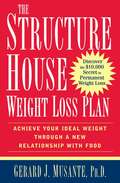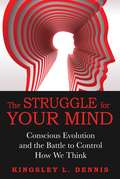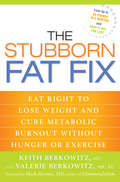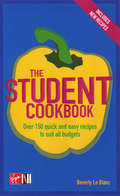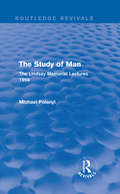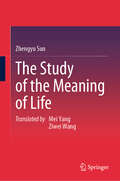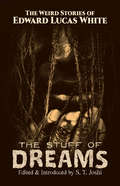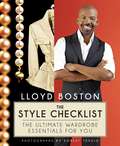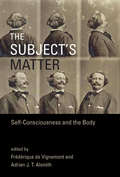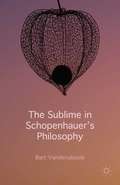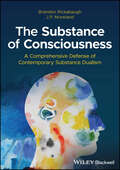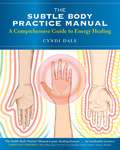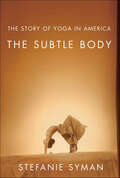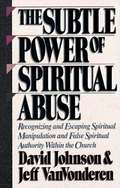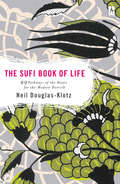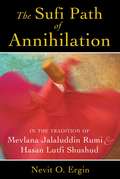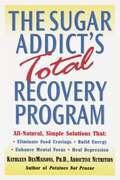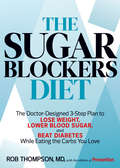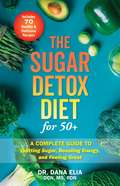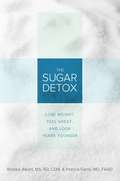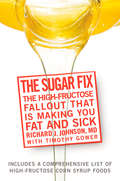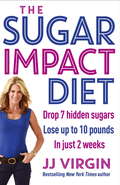- Table View
- List View
The Structure House Weight Loss Plan
by Gerard J. MusanteREDEFINE YOUR RELATIONSHIP WITH FOOD -- AND REACH YOUR IDEAL WEIGHT! Obesity expert Dr. Gerard Musante and his residential weight loss center, Structure House, have helped more than thirty thousand people lose weight. A stay at Structure House costs thousands of dollars. Now Dr. Musante's innovative ideas and effective treatment methods are yours for the price of this book. IT'S NOT FOOD THAT MAKES YOU FAT -- IT'S YOUR EATING BEHAVIOR. During his thirty years of practice, Dr. Musante has shown that it is your relationship with food that determines your ability to reach your ideal weight. His system targets behaviors resulting from habit, boredom, or stress that lead to unstructured eating -- eating for nonnutritional reasons -- and presents concrete methods for designing new, structured eating patterns. You'll learn to isolate your unhealthy eating, recognize and neutralize the food triggers that cause your unstructured eating, and stop using food to satisfy needs other than hunger. Dr. Musante's method gets to the root of these behaviors by completely reconstructing your daily experience with food and therefore the choices you make about what to eat. The Structure House Weight Loss Plan presents Dr. Musante's Structured Eating system. You will learn to eat nutritious food in appropriate portions three times a day -- the food that you need to meet your nutritional requirements and to reach and maintain the level of weight you desire. The Structured Eating program is presented in three sections. The first section, "Get Structured," guides you through making the changes that will increase success, including understanding your eating behaviors that emerge from habit, boredom, and stress; learning how the organization of your refrigerator and cabinets can lead to weight loss or weight gain; and analyzing the attitudes toward food of the people who surround you at work and at home. In the second section, "Be Structured," you learn about food choices; meal planning, including grocery shopping and food preparation; and identifying the right kinds of exercise that will enhance your success. In the final section, "Stay Structured," Dr. Musante shares all the secrets of lifestyle change that will help you take and, more important, keep the weight off. The strategies are both large and small, simple and profound, immediate and long lasting. Using the Structure House approach, you'll be in control of food -- not controlled by it. You'll gain power by taking responsibility -- and then you can take credit for your successes.
The Struggle for Your Mind: Conscious Evolution and the Battle to Control How We Think
by Kingsley L. DennisA revolutionary call to overthrow society’s mental controls and expand consciousness for the greater good of humanity • Explores the tactics used to control consciousness, such as misinformation, debt systems, fear conditioning, and the distraction of entertainment and technology • Reveals the emerging mechanisms for neurogenetic evolution within our brains that will enable us to throw off the shackles of mental control • Explains how to break through the barriers inhibiting conscious evolution and restore our connection with Nature and the Divine Within society there exists a silent war. The battlefield is our everyday lives: our education, our work, our leisure, our emotional and spiritual well-being, and our thinking and perceptions. Our very sense of “reality” is deliberately engineered to work against conscious evolution and preserve social norms. In short, we are all part of a war of consciousness. And the opportunity is at hand for us to win. Assessing the ways modern societies limit consciousness and keep humanity obedient and distracted from their inner lives, Kingsley Dennis presents an eye-opening investigation of the way our minds have been programmed to preserve incumbent power structures and their rules. He exposes the tactics employed for thousands of years by the elite to control our minds, including misinformation and propaganda, debt systems, consumerism, religious doctrine, scientific authority, economic “uncertainties,” fear of terrorist attacks and armageddon, distraction through entertainment and technology, as well as the false belief that we are separate from Nature and the Divine. Despite these obstacles, humanity is awakening to culture’s imposed limits on perception through an accelerating rise in collective empathy and awareness. Exploring the biology of consciousness, Dennis reveals the emerging mechanisms for neurogenetic evolution within the brains of gifted individuals, psychics, and visionaries and the coming increases in solar and magnetic energies that will activate them within all of us. Explaining how we can free up mental and emotional energy to break through the barriers inhibiting conscious evolution, he shows that by taking back our minds and changing the way we think, we can restore our connection with Nature and the Divine and lead humanity into a new age of harmony and awareness.
The Stubborn Fat Fix: Eat Right to Lose Weight and Cure Metabolic Burnout without Hunger or Exercise
by Keith Berkowitz Valerie BerkowitzNamed a Best Book 2010 in the Health: Diet/Weight Loss Category Do you feel tired all the time? Do you feel hungry between meals, even if you've just eaten? Do you crave candy, soda, or coffee, especially in the mid-afternoon? If you answered yes to any of these questions, you may have a metabolic disadvantage. Most diet plans fail because they don't address the underlying metabolic conditions that contribute to increased hunger and weight gain. In fact, they often worsen the problem by cutting calories and prompting food cravings. This further stresses your metabolism and leaves you hungrier—and heavier—than ever. The Stubborn Fat Fix remedies this by identifying and treating metabolic imbalances. Based on the results of simple quizzes, you'll choose between two eating plans that prescribe the ideal foods needed to repair your metabolic disorder and turn off faulty hunger signals. On both plans, you'll lose weight by doing something that seems counterintuitive—eat more, move less—in order to heal your metabolism. You can even incorporate "luxury" foods—indulging in ice cream, salty snacks, bread, wine or beer, or even chocolate—to stay on track without feeling deprived. A tailored supplement program, carefully controlled exercise, and stress-reduction techniques complete the metabolic cure. Even better, once your metabolism is in balance, you will not only permanently drop pounds but also improve your cholesterol, blood pressure, blood sugar, and energy levels for overall better health. Hundreds of the Berkowitzes' patients, like those profiled in the book, have successfully lost up to 70 pounds with this plan. With The Stubborn Fat Fix—featuring more than 30 delicious recipes and the exclusive Fiber Ratio tool created by Valerie to help you get the most out of your favorite foods—you, too, can lose that stubborn fat forever.
The Student Cookbook
by Beverly Le BlancOne of the harshest realities of student life is when you suddenly realise no-one is cooking for you anymore! But don't despair. Forget beans on toast every night and frittering money away on take-aways, there are plenty of tasty recipes in The Student Cookbook. No matter how strapped for cash, how hungover or partied out you are, how weary from cramming, there's inspiration galore in this book, including great ideas for all day breakfasts, a selection of one pot meals, a few 'posh-nosh' ideas for entertaining, cocktail recipes and hangover cures.
The Study of Man: The Lindsay Memorial Lectures 1958 (Routledge Revivals)
by Michael PolanyiMichael Polanyi (1891-1976) was an eminent theorist across the fields of philosophy, physical chemistry and economics. Elected to the Royal Society and the American Academy of Arts and Sciences, his contributions to research in the social sciences, and his theories on positivism and knowledge, are of critical academic importance. The three lectures included in this comprehensive volume, first published in 1959, argue for Polanyi’s principle of ‘tacit knowing’ as a fundamental component of knowledge. They were intended to accompany Polanyi’s earlier work, Personal Knowledge, and as a tribute to the philosophical and educational work of Lord A. D. Lindsay.
The Study of the Meaning of Life
by Zhengyu SunBased on the revelation and analysis of the social self-consciousness contained in the individual self-consciousness of the meaning of life, the book discusses the human life-world, spiritual world, cultural world and meaning-world. Then, it states the life-world, modes of thought, values ideas, aesthetic consciousness and ultimate concerns of modern humans. It also systematically expounds on the cultivation, the truth, the nurture, the sublimation, the support, the tension and the source of the spiritual home in perspectives of education, science, art, philosophy, theory, mentality and ideals. Constructing a fulfilling spiritual home for man is the realistic meaning of this book.
The Stuff of Dreams: The Weird Stories of Edward Lucas White (Dover Horror Classics)
by S. T. Joshi Edward Lucas WhiteThis original compilation presents chilling tales of terror by an unjustly neglected author. Inspired by the works of Edgar Allan Poe as well as his own vivid nightmares, Edward Lucas White (1866-1934) weaves a tapestry of weird stories populated by ghouls, monsters, a witch doctor, and creatures of ancient myths. The collection features White's most famous story, "Lukundoo," a gripping fable of an American explorer who incurs the wrath of an African sorcerer. Other tales include "Sorcery Island," an uncanny foreshadowing of television's The Prisoner, "The Flambeau Bracket," "The House of the Nightmare," "The Song of the Sirens," and five other stories. Additional selections include the haunting poems "Azrael" and "The Ghoula" and an essay in which the author reflects on the influence of dreams in his fiction. Editor S. T. Joshi provides an informative Introduction to White's life and work.
The Style Checklist
by Lloyd BostonThe good news is: the most stylish clothes you can have are probably already in your closet. But savvy women are on a perpetual quest to find the perfect addition to their wardrobe: the perfect bathing suit, a traffic-stopping pair of jeans, that classic little black dress. While the editorial pages of high fashion magazines can offer inspiration, they can't help you find what works for your looks and lifestyle. But Lloyd Boston's The Style Checklist offers basic guidance to help make your everyday commute your runway. With solutions to common fashion problems and a lot of how-to advice, this book simplifies and demystifies how to achieve style.
The Subject's Matter: Self-Consciousness and the Body (Representation and Mind series)
by Frédérique De Vignemont Adrian J. T. AlsmithAn interdisciplinary and comprehensive treatment of bodily self-consciousness, considering representation of the body, the sense of bodily ownership, and representation of the self.The body may be the object we know the best. It is the only object from which we constantly receive a flow of information through sight and touch; and it is the only object we can experience from the inside, through our proprioceptive, vestibular, and visceral senses. Yet there have been very few books that have attempted to consolidate our understanding of the body as it figures in our experience and self-awareness. This volume offers an interdisciplinary and comprehensive treatment of bodily self-awareness, the first book to do so since the landmark 1995 collection The Body and the Self, edited by José Bermúdez, Naomi Eilan, and Anthony Marcel (MIT Press). Since 1995, the study of the body in such psychological disciplines as cognitive psychology, cognitive neuroscience, psychiatry, and neuropsychology has advanced dramatically, accompanied by a resurgence of philosophical interest in the significance of the body in our mental life. The sixteen specially commissioned essays in this book reflect the advances in these fields. The book is divided into three parts, each part covering a topic central to an explanation of bodily self-awareness: representation of the body; the sense of bodily ownership; and representation of the self.ContributorsAdrian Alsmith, Brianna Beck, José Luis Bermúdez, Anna Berti, Alexandre Billon, Andrew J. Bremner, Lucilla Cardinali, Tony Cheng, Frédérique de Vignemont, Francesca Fardo, Alessandro Farnè, Carlotta Fossataro, Shaun Gallagher, Francesca Garbarini, Patrick Haggard, Jakob Hohwy, Matthew R. Longo, Tamar Makin, Marie Martel, Melvin Mezue, John Michael, Christopher Peacocke, Lorenzo Pia, Louise Richardson, Alice C. Roy, Manos Tsakiris, Hong Yu Wong
The Sublime in Schopenhauer's Philosophy
by Bart VandenabeeleThe Sublime in Schopenhauer's Philosophy transforms our understanding of Schopenhauer's aesthetics and anthropology. Vandenabeele seeks ultimately to rework Schopenhauer's theory into a viable form so as to establish the sublime as a distinctive aesthetic category with a broader existential and metaphysical significance.
The Substance of Consciousness: A Comprehensive Defense of Contemporary Substance Dualism
by J. P. Moreland Brandon RickabaughA singularly powerful and rigorous argument in favor of modern substance dualism In The Substance of Consciousness: A Comprehensive Defense of Contemporary Substance Dualism, two distinguished philosophers deliver a unique and powerful defense of contemporary substance dualism, which makes the claim that the human person is an embodied fundamental, immaterial, and unifying substance. Multidisciplinary in scope, the book explores areas of philosophy, cognitive science, neuroscience, and the sociology of mind-body beliefs. The authors present the most comprehensive, up-to-date, and rigorous non-edited work on substance dualism in the field, as well as a detailed history of how property and substance dualism have been presented and evaluated over the last 150 years. Alongside developing new and updated positive arguments for substance dualism, they also discuss key metaphysical notions and distinctions that inform the examination of substance dualism and its alternatives. Readers will also find: A thorough examination of the recent shift away from standard physicalism and the renaissance of substance dualism Comprehensive explorations of the likely future of substance dualism in the twenty-first century, including an exhaustive list of proposed research projects for substance dualists Practical discussion of new and rigorous critiques of significant physicality alternatives, including emergentism and panpsychism. Extensive treatments of philosophy of mind debates about the roles played by staunch/faint-hearted naturalism and theism in establishing or presuming methodology, epistemic priorities, and prior metaphysical commitments Perfect for professional philosophers, The Substance of Consciousness will also earn a place in the libraries of consciousness researchers, philosophical theologians, and religious studies scholars.
The Subtle Body Practice Manual: A Comprehensive Guide To Energy Healing
by Cyndi DaleCyndi Dale's The Subtle Body has become the go-to reference guide for anyone who wants to learn about the many varieties of energy healing. With The Subtle Body Practice Manual, she offers an equally valuable resource: a practical instruction manual for putting energy healing into action. Filled with lucid information, step-by-step guidance, diagrams, and key insights, here is an expansive how-to manual that covers practices from a vast range of holistic healing and energy medicine traditions, including: The six core energy techniques that every healer should know • Energetic diagnosis practices to determine which kind of modality will be most effective for specific health issues • Setting strong and flexible energetic boundaries, with special guidance for those in the healing professions • Techniques for working with the subtle aspects of the body, emotions, and the subconscious mind • Dozens of practices for healing through the chakras, the meridians, chi, breathwork, auric fields, sacred geometry, acupressure, music, and much more As Cyndi Dale writes, all medicine is energy medicine—which is why subtle energy practices can be used to complement and enhance any approach to healing or self-care. Presented with Cyndi Dale's thorough scholarship and clear writing style, The Subtle Body Practice Manual provides professionals and laypersons alike with an indispensible resource on the many varieties and applications of energetic care—so you can begin using these powerful practices in your own life.
The Subtle Body: The Story of Yoga in America
by Stefanie SymanIn The Subtle Body, Stefanie Syman tells the surprising story of yoga's transformation from a centuries-old spiritual discipline to a multibillion-dollar American industry. Yoga's history in America is longer and richer than even its most devoted practitioners realize. It was present in Emerson's New England, and by the turn of the twentieth century it was fashionable among the leisure class. And yet when Americans first learned about yoga, what they learned was that it was a dangerous, alien practice that would corrupt body and soul. A century later, you can find yoga in gyms, malls, and even hospitals, and the arrival of a yoga studio in a neighborhood is a signal of cosmopolitanism. How did it happen? It did so, Stefanie Syman explains, through a succession of charismatic yoga teachers, who risked charges of charlatanism as they promoted yoga in America, and through generations of yoga students, who were deemed unbalanced or even insane for their efforts. The Subtle Body tells the stories of these people, including Henry David Thoreau, Pierre A. Bernard, Margaret Woodrow Wilson, Christopher Isherwood, Sally Kempton, and Indra Devi. From New England, the book moves to New York City and its new suburbs between the wars, to colonial India, to postwar Los Angeles, to Haight-Ashbury in its heyday, and back to New York City post-9/11. In vivid chapters, it takes in celebrities from Gloria Swanson and George Harrison to Christy Turlington and Madonna. And it offers a fresh view of American society, showing how a seemingly arcane and foreign practice is as deeply rooted here as baseball or ballet. This epic account of yoga's rise is absorbing and often inspiring—a major contribution to our understanding of our society.
The Subtle Energy Body: The Complete Guide
by Maureen LockhartA global study of the psychospiritual body and its central role in the esoteric and spiritual traditions of the world • Explains the nature, purpose, and functions of the subtle body • Explores the role of the subtle body in such traditions as Alchemy, Ayurveda, Tantra, Qi Gong, and Yoga • Shows how the various layers of the subtle body provide a map for various levels of consciousness Ancient traditions of both the East and West have long maintained that the human being is a complex of material and nonmaterial systems, or energy bodies. The “subtle body” is an energetic, psychospiritual entity of several layers of increasing subtlety and metaphysical significance through which the aspirant seeks knowledge of the self and the nature of God. In many traditions, the component parts of the subtle body serve as a map of the different levels of consciousness. The practices and disciplines that evolved from an awareness and understanding of the subtle body, and how the material and nonmaterial work together, form a coherent system of psychospiritual transformation that is central to numerous and extremely diverse spiritual practices--including those of the Gnostics, Sufis, Native Americans, Vedic seers, Chinese, and Greeks. The subtle body plays an essential part in more recent traditions such as Anthroposophy and Gurdjieff’s Fourth Way and the cutting-edge science of Ervin Laszlo’s research into the Akashic field. But the benefits of understanding the role of the subtle energy body are not confined solely to the spiritual plane. The energetic bodies provide a coherent system of life-affirming principles and practices for the diagnosis and treatment of the whole person that is not only part of many traditional healing systems, such as Acupuncture and Ayurveda, but also is forming the basis for a synthesis of traditional and contemporary healing practices that could lay the foundation for the medicine of the future.
The Subtle Power of Spiritual Abuse
by David Johnson Jeff VanvonderenThis book examines what spiritual abuse is and how to overcome it.
The Success Principles(TM): How to Get from Where You Are to Where You Want to Be
by Jack Canfield Janet SwitzerIn celebration of its 20th anniversary, a revised and updated edition of legendary self-esteem expert and #1 New York Times bestselling author of the Chicken Soup for the Soul series Jack Canfield’s classic and inspiring guide, which has helped thousands of people transform themselves for success.Get ready to transform yourself for success. Jack Canfield, cocreator of the phenomenal bestselling Chicken Soup for the Soul series, returns to the principles he’s studied, taught, and lived for more than 40 years in this updated edition of his practical and inspiring guide that will help any aspiring person get from where they are to where they want to be.This new edition includes:Updated chapters in the section “Success in the Digital Age,” including completely up-to-date material on using technology to meet your success goals, building an online persona through social media, and using crowdfunding to grow your business, launch a new brand, or fund your favorite social cause. Comprehensive subchapter on generative A.I. that calms the fear about this powerful technology, then describes how to use it to achieve your personal and professional goals. Complete instructions for creating a powerful vision board that helps you focus on your goals, visualize success every day, and engage your subconscious mind in creating the smaller wins you need to achieve big goals. Filled with memorable, modern, and inspiring stories of CEO’s, world-class athletes, celebrities, and everyday people, The Success Principles will give you the courage and the heart to start living the principles of success today.
The Sufi Book of Life
by Neil Douglas-KlotzPart meditation book, part oracle, and part collection of Sufi lore, poetry, and stories, The Sufi Book of Life offers a fresh interpretation of the fundamental spiritual practice found in all ancient and modern Sufi schools—the meditations on the 99 Qualities of Unity. Unlike most books on Sufism, which are primarily collections of translated Sufi texts, this accessible guide is a handbook that explains how to apply Sufi principles to modern life. With inspirational commentary that connects each quality with contemporary concerns such as love, work, and success, as well as timeless wisdom from Sufi masters, both ancient and modern, such as Rumi, Hafiz, Shabistari, Rabia, Inayat Khan, Indries Shah, Irina Tweedie, Bawa Muhaiyadden, and more, The Sufi Book of Life is a dervish guide to life and love for the twenty-first century. On the web: http://sufibookoflife. com .
The Sufi Path of Annihilation: In the Tradition of Mevlana Jalaluddin Rumi and Hasan Lutfi Shushud
by Nevit O. ErginAn exploration of the profound Sufi practice of Itlak Yolu • Examines the three main facets of this practice: zikr or breathing exercises, fasting, and mental suffering • Shares new Sufi parables, the sayings of Sufi master Hasan Lutfi Shushud, and Rumi’s philosophy on annihilation of the Self • Reveals how once the Self is annihilated higher levels of perception are reached In this exploration of the profound spiritual practice of Itlak Yolu, the Sufi path of annihilation, Nevit Ergin examines the three main facets of this path: zikr or breathing exercises, fasting, and mental suffering. Sharing experiences and discussions with Hasan Lutfi Shushud, renowned Sufi saint and final guide of Gurdjieff’s disciple J. G. Bennett, the author illustrates how suffering--“the searing fire of contrition”--is the most effective instrument of spiritual progress, for it is suffering that burns the Self. He explains how faithful practice of zikr and fasting will bring on this kind of suffering when the student is ready and will make the suffering tolerable. He shows how once the Self is annihilated higher levels of perception take hold and one finds oneself on the path to sainthood and immortality. Interwoven throughout with sayings by Shushud, Sufi parables, and poems by Rumi, Ergin shares the unique Itlak perspective on the major questions of every seeker: the true nature of love and religion, life and death, and other major spiritual questions. The book also includes an essay on annihilation and absence in Rumi’s philosophy and biographical portraits of Hasan Lufti Shushud by other aspirants who met with him.
The Sugar Addict's Total Recovery Program
by Kathleen DesmaisonsBuilding on the science of nutrition that she outlined in her bestselling book, Potatoes Not Prozac, Dr. Kathleen DesMaisons now presents the first complete, in-depth dietary plan for living with-and healing-sugar sensitivity. She explains exactly how you can free your mind and body from the tyranny of sugar and shake off the exhaustion, mental fogginess, and mood swings that sugar dependence causes. Revealing the various ways sugar addiction affects both men and women, and the unique methods for healing it, Dr. DesMaisons encourages you to custom-tailor her simple program to fit your lifestyle and includes information on* How to integrate a "slow-carbs not low-carbs" strategy into your diet * Why regular protein is essential and how to get it with every meal* What to eat when a sugar craving strikes* How to get the nutrition you need on the run-even at fast-food restaurants * How to find an exercise program you'll enjoy* Ten breakfasts you can prepare in a flash * Menus and recipes for every lifestyle and tastePractical, hands-on, and reader friendly, The Sugar Addict's Total Recovery Program will transform your life by helping you eat right-starting today!From the Trade Paperback edition.
The Sugar Blockers Diet: The Doctor-Designed 3-Step Plan to Lose Weight, Lower Blood Sugar, and Beat Diab etes--While Eating the Carbs You Love
by Rob ThompsonThis groundbreaking plan teaches you to outsmart blood sugar spikes so you can eat the carbs you love and still lose weight.Starches are one of the biggest culprits when it comes to the nation's weight problems. Starches spike blood sugar levels, which can make losing weight nearly impossible. Unfortunately, many of favorite foods--pasta, bread, rice--are the worst offenders. But who wants to cut out these delicious dishes and feel deprived?By focusing on certain foods that slow the effect of starches on blood sugar, The Sugar Blockers Diet offers a smart eating strategy that can be maintained for life. These foods, called sugar blockers, include all kinds of everyday foods from steak or cheese to vinaigrette or a glass of wine. Learning how to include these foods at every meal will not only help you lose weight, but also help you reverse insulin resistance and defend against diabetes. In addition to a robust list of sugar blocking foods and strategies, the book includes more than 50 tantalizing, nutrient-rich recipes; an easy, fun walking plan proven to balance blood sugar and help the pounds melt away; and a proven plan on which real men and women lost up to 18 1⁄2 pounds and 9 1⁄4 inches in just 6 short weeks.
The Sugar Detox Diet for 50+: A Complete Guide to Quitting Sugar, Boosting Energy, and Feeling Great
by Dana EliaBeat your sugar cravings and kick-start healthier habits with this dietary detox specially designed for seniors. Sugar crash? Again? As your body ages, many things change—including your metabolism and the way your body reacts to certain foods. The Sugar Detox Diet for 50+ explains the science behind this and outlines strategies for starting a gentle dietary detox today, including: Eliminating high-sugar fruits, vegetables, and snacks Increasing water intake and hydration levels Adding more protein to your meals And much more! Registered dietitian and author Dr. Dana Elia explains how to safely and effectively eliminate excess sugar from your diet to boost energy, help with weight loss, and prevent harmful health conditions such as heart disease, diabetes, and high cholesterol. Inside you’ll also find recipes for breakfast, lunch, dinner, and snack options. Taming your sweet tooth has never been easier!
The Sugar Detox: Lose Weight, Feel Great, And Look Years Younger
by Brooke Alpert Patricia FarrisA revolutionary program to kick your sugar habit for good, taking years off your body and face
The Sugar Fix: The High-Fructose Fallout That Is Making You Fat and Sick
by Richard Johnson Tim GowerIn The Sugar Fix, Dr. Richard Johnson, who oversees a pioneering research program, reports on discoveries about how fructose impacts the body—and directly connects the American obesity epidemic to a frightening escalation in our fructose consumption. It comes as no surprise that the sugar is found in processed foods like candy, baked goods, canned foods, and frozen meals in the form of high-fructose corn syrup, but it is also hidden in less obvious foods like peanut butter, egg products, and soups. Many fruits and vegetables contain high levels of it naturally. Dr. Johnson shows how to cut way back on the sweetener by making effective substitutions. The daily meal plans included here contain no more than 25 grams of fructose, one-quarter of the amount the average American now ingests. Rather than the low-carb approach of so many recent diets, Dr. Johnson recommends a much easier to enjoy and stick to formula: 50% carbs, 25% fat, and 25% protein. The immediate benefit of this diet is to help anyone shed excess weight. The additional benefits are even more impressive—reduced risk for such serious health problems as high blood pressure, elevated blood fats, and insulin resistance, conditions directly linked to heart disease, diabetes, kidney disease, and stroke.
The Sugar Impact Diet: Drop 7 hidden sugars, lose up to 10 pounds in just 2 weeks
by JJ VirginOutsmart Sneaky Sugars to Lose Fat Fast!If you're eating healthily, but just can't seem to lose weight, you're not alone. Sugar is the single biggest needle mover when it comes to your health and the number on the scale, but sugar hides in places you'd never expect: whole foods, diet foods, packaged foods, dressings... even sugar substitutes. And it's not enough simply to cut out or cut back on sugar - you have to cut out the right kinds of sugar.In this ground-breaking book, New York Times bestselling author JJ Virgin explains the powerful concept of Sugar Impact: how different sugars react differently in the body. High Sugar Impact foods cause weight gain, energy crashes and inflammation. Low Sugar Impact foods fuel your body for prolonged energy and promote fat burning. This book will pinpoint the most damaging sugars that we eat every day - without even realising it - in common foods like skimmed milk, diet soda, wholegrain bread, and 'healthy' sweeteners like agave.By swapping high Sugar Impact foods for low Sugar Impact foods you will shed fat fast - up to 10 pounds in 2 weeks! - and transform your body and your health for good. Best of all, you don't need to eliminate sugar completely or count calories. Prepare to: Lose the bloat Target belly fat Rev your metabolism Cut cravings Become a fat burner, not a sugar burner Lose fat fast - and forever!
The Sugar Smart Diet: Stop Cravings and Lose Weight While Still Enjoying the Sweets You Love!
by Anne Alexander Julia VanTineSugar is the most controversial subject in the American diet debates today—alternately viewed as public health enemy No. 1 and an innocent indulgence. A New York Times bestseller, The Sugar Smart Diet reveals the suite of hidden sugars in food that have skyrocketed the nation’s annual sugar intake to more than 130 pounds per person (sugar is not hiding where most people think), identifies which popular sugar increases the body’s ability to store fat, and explains how excess sugar leads to diabetes, heart disease, and more.The Sugar Smart Diet’s 32-day plan uniquely addresses the emotional and physiological effects of sugar, empowering readers to take charge of sugar, rather than letting sugar take charge of them."Once rare in the human diet, sugar is now ubiquitous and often hidden in unexpected places. Simply becoming aware of sugar can help you cut your intake, which is one of the smartest moves you can make to achieve optimal wellness. This informative guide tells you how to do that." —Dr. Andrew Weil
